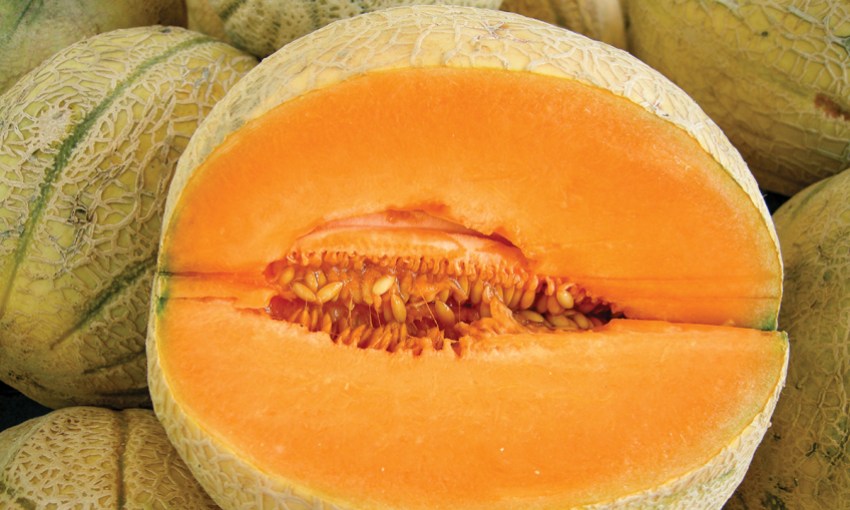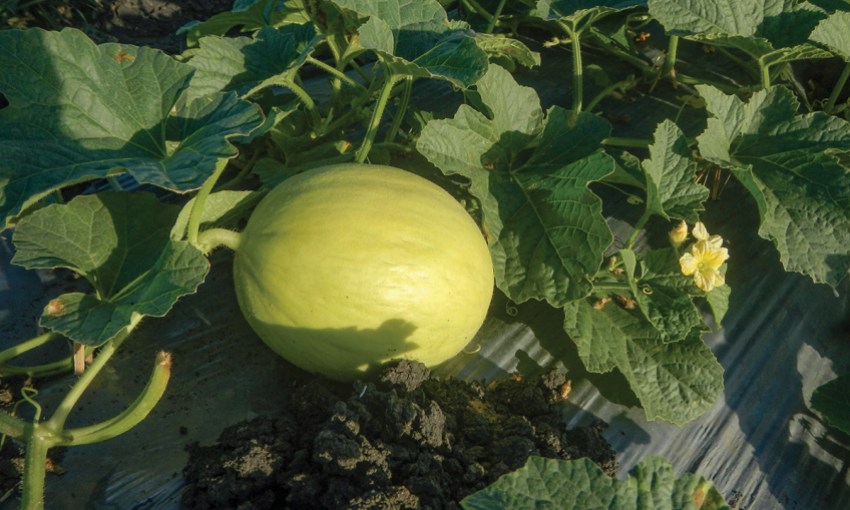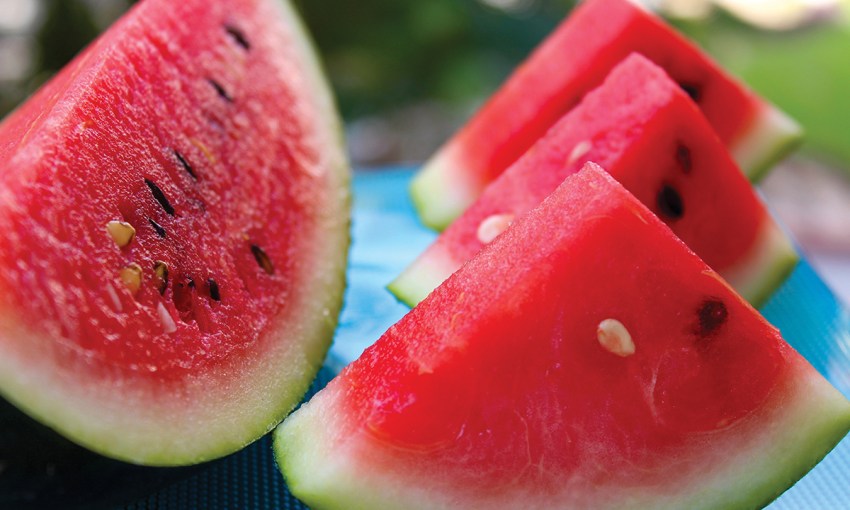Start up your summer-loving melons this spring and reap the rewards over the warmer months.
Using your melon
Is there anything better than a chilled slice of home-grown watermelon, rockmelon or honeydew to cool off from that summer heat?
Space for these warm-season vines tends to become scarce once the veggie patch is planted out with tomatoes, capsicum and eggplant, so plan a place for them now. Like zucchini and pumpkin, melons do spread, so an open, well-drained, full-sun location where the tendrils can reach out is ideal.
Watermelon was a popular food in ancient Egypt and over the millennia since then, continual breeding and selection has given us the sweet and juicy watermelon we all know and love today.
Rockmelon (also known as cantaloupe) and honeydew are closely related, although rockmelon’s dark, netted rind and orange flesh is vastly different to honeydew’s smooth, light-coloured skin and green flesh.
To ensure there is plenty of time for melons to grow, plant from September to November. Fruit takes up to 20 weeks to ripen, so late plantings can often lead to disappointing results with melons that do not properly mature.
Soil preparation is a key to success with melons. Add plenty of well-aged organics and handfuls of blood and bone to the planting area then dig in to improve fertility.

Starting your melons from seed is very cost effective and easy to do. If planting directly into soil, plant seeds in tight clusters of three to four seeds a few centimetres apart. As these seeds germinate, remove the weaker seedlings and leave two plants per cluster. If you are worried about frost or the patch isn’t ready, start off seeds in a tray of seed raising mix. Carefully lift and plant once germinated to seedling size.
Keeping the area moist, but not over-wet, will see the vines jump away. If space is an issue, you can nip off any errant tendrils to within two metres of the main plant. Although be careful once flowering starts not to remove too many female flowers, these are the ones with a bulb at the base as opposed to the male flowers which have a thin stem below the bloom. The female flowers will develop into fruit once pollinated, so less of these could mean fewer melons to pick.
Encouraging bees into your garden is good for all pollination. So, the more bee-attracting flowers – such as borage, lavender and rosemary – the better. If your bee and other pollinating insect numbers are low, pick a male flower and rub it onto some of the female flowers to share that important pollen.
Growing seedless watermelons at home is possible if you have the right varieties and genetics. You cannot grow a seedless watermelon from a single seed. To create this type, you need a special host plant and a compatible pollinator. A host plant is the one that, once pollinated, produces the seedless fruit. Some companies advertise seedless watermelon seeds and what you will receive are seeds of an F1 (triploid) variety and a pollinator (diploid) cultivar. When planted together, cross pollination, especially hand pollination, gives a good chance of producing watermelons without large seeds. While called “seedless”, you will find tiny, white edible seeds inside, like those in a cucumber.

Once flowering starts, feed with a dedicated fruit and citrus fertiliser such as those from Giganic, Thrive or Brunnings. This will provide a steady flow of growing and fruiting nutrients. Avoid high nitrogen feeds as these will promote growth but little in the way of blooms.
As the melons begin to near their picking time, reduce watering to increase the fruit’s sweetness.
Harvest watermelons when the skin loses its shiny lustre and the underside touching the ground turns from a greenish white to creamy yellow. Tapping on the melon and hearing a hollow sound is another sign of ripeness. Cut the stem and remove from the vine.
Rockmelons are ready to pick when the skin turns tan yellow and the stem develops cracks. The fruit will also have a distinctive musky odour. A ripe rockmelon should easily come away from the vine and if not, it will need a little more time. Once picked, it is best to eat fresh or refrigerate as they won’t ripen any further and are not a long storer.
Harvest honeydew when the skin turns from green to a creamy colour, the attaching stem looks a little withered and a few close leaves begin to yellow. You should be able to detect a musk odour, though not nearly as strong as rockmelon. You can also test the base of the honeydew and if it pushes in a little when pressed, it’s ready for picking. Of course, you can simply cut one open and have a taste.
This article first appeared in the Spring 2022 issue of SALIFE Gardens & Outdoor Living magazine.



